Galls in gardens
By Peter Shirley British Plant Gall Society reviewed by Steve Head
Many garden plants are hosts to gall-causing insects, mites and fungi. Their galls are often complex and colourful and generally harmless, although some such as Taphrina padi (see below) and Agrobacterium tumefascians (which causes crown galls) can be serious pests of fruit and vegetables. On the other hand the Rhyzobium root galls of legumes are responsible for the nitrogen enrichment of soils associated with the family. A lot of galls can easily be identified (see references and images below) and learning to find and recognise them opens up a new dimension for wildlife gardeners.
The main groups of mite and insect gall-causers are eriophyid mites, gall midges and gall wasps. Other insect gall causers include some psyllids, aphids, flies other than midges, beetles, moths and sawflies. Galls are found on trees and shrubs and on many herbaceous plants, including grasses and ferns. They come in a wide variety of forms and sizes and may be very prominent or very obscure. Insect and mite causers are wholly or partly enclosed by their galls, which provide them with nutrition as well as shelter and protection while they develop.
Most gall-causers are associated with particular species or genera of host plants. Well known examples include oak apples, robin’s pincushions on wild roses, nail galls on maples, limes and other trees, and red bean galls on willows and sallows.
The number of species and their range in Britain is constantly changing, not least because of the horticultural trade. A psyllid, Trioza alacris, which produces galls on bay was first found in Britain in gardens in the south, and has since spread northwards. A gall causing mite on Fuschia, Aculops fuchsiae first recorded at Kew in 2007, appears to be following the same route, although its spread may be limited because it may not survive harsh winters. These and eight other galls likely to be found in gardens and allotments are described and illustrated below. Records of these and other galls in gardens will be welcome, either through local biological recording schemes or iRecord.
Gall made by a fungus
Taphrina padi "tongue gall" fungus
on Prunus species. There are two galled
and two normal fruits.
Galls in gardens
By Peter Shirley British Plant Gall Society reviewed by Steve Head
Many garden plants are hosts to gall-causing insects, mites and fungi. Their galls are often complex and colourful and generally harmless, although some such as Taphrina padi (see below) and Agrobacterium tumefascians (which causes crown galls) can be serious pests of fruit and vegetables. On the other hand the Rhyzobium root galls of legumes are responsible for the nitrogen enrichment of soils associated with the family. A lot of galls can easily be identified (see references and images below) and learning to find and recognise them opens up a new dimension for wildlife gardeners.
The main groups of mite and insect gall-causers are eriophyid mites, gall midges and gall wasps. Other insect gall causers include some psyllids, aphids, flies other than midges, beetles, moths and sawflies. Galls are found on trees and shrubs and on many herbaceous plants, including grasses and ferns. They come in a wide variety of forms and sizes and may be very prominent or very obscure. Insect and mite causers are wholly or partly enclosed by their galls, which provide them with nutrition as well as shelter and protection while they develop.
Most gall-causers are associated with particular species or genera of host plants. Well known examples include oak apples, robin’s pincushions on wild roses, nail galls on maples, limes and other trees, and red bean galls on willows and sallows.
The number of species and their range in Britain is constantly changing, not least because of the horticultural trade. A psyllid, Trioza alacris, which produces galls on bay was first found in Britain in gardens in the south, and has since spread northwards. A gall causing mite on Fuschia, Aculops fuchsiae first recorded at Kew in 2007, appears to be following the same route, although its spread may be limited because it may not survive harsh winters. These and eight other galls likely to be found in gardens and allotments are described and illustrated below. Records of these and other galls in gardens will be welcome, either through local biological recording schemes or iRecord.
Gall made by a fungus
Taphrina padi "pocket plum" fungus on Prunus species
There are two galled and two normal fruits.
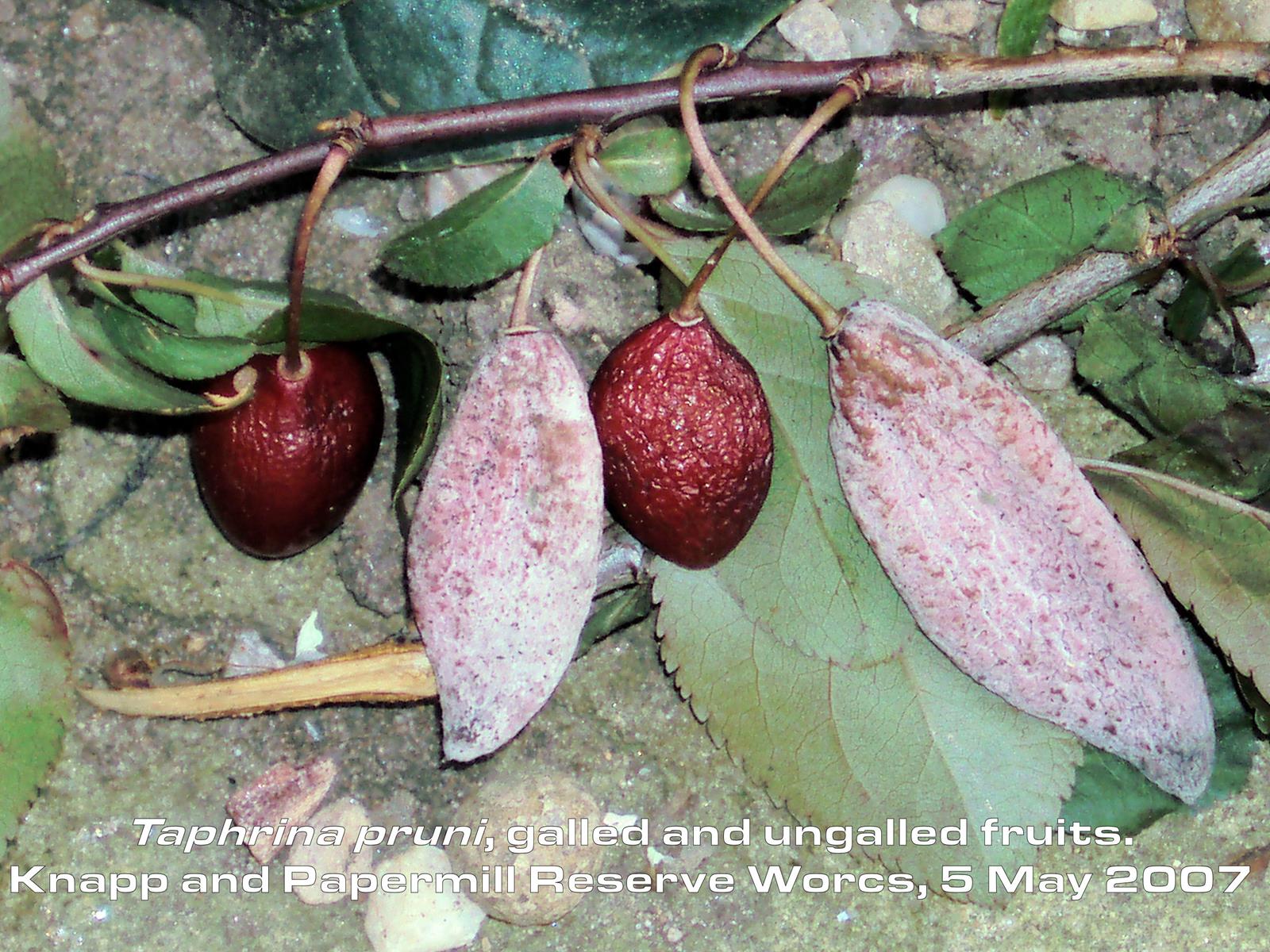
THE BRITISH PLANT GALL SOCIETY
BPGS encourages and coordinates the study of plant galls, with particular reference to the British Isles. We publish keys to, and books about, plant galls, organise field meetings and gall gathering weekends, workshops on gall ecology, and offer identification services. Members receive our twice yearly bulletin 'Cecidology' and we are developing a recording scheme with iRecord. Our website includes a library of gall pictures.
Our website is https://www.britishplantgallsociety.org
Find us on Twitter @britgalls
On Facebook British Plant Galls (in association with BPGS) here
Finding out more
Redfern M. & Shirley P. (2023) British Plant Galls Third Edition, A Field Studies Council AIDGAP key
Chinery, M. (2011) Britain’s Plant Galls – a photographic guide. WildGuides Ltd
Galls made by mites
Aculops fuchsiae mite on Fuchsia
Eriophyes pyri mite on Rowan - late stage
Aceria labiatiflorae on wild Marjoram
For more on gall mites see our page here
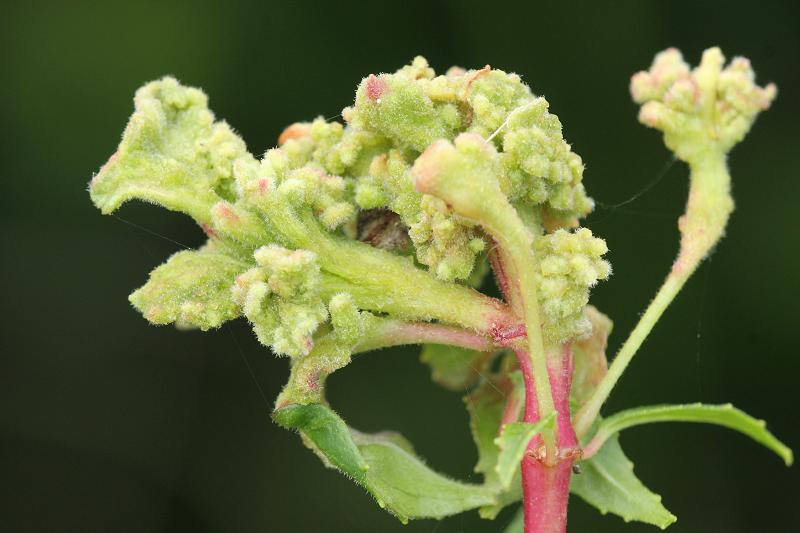
 Photo Michael Chinery.jpg)
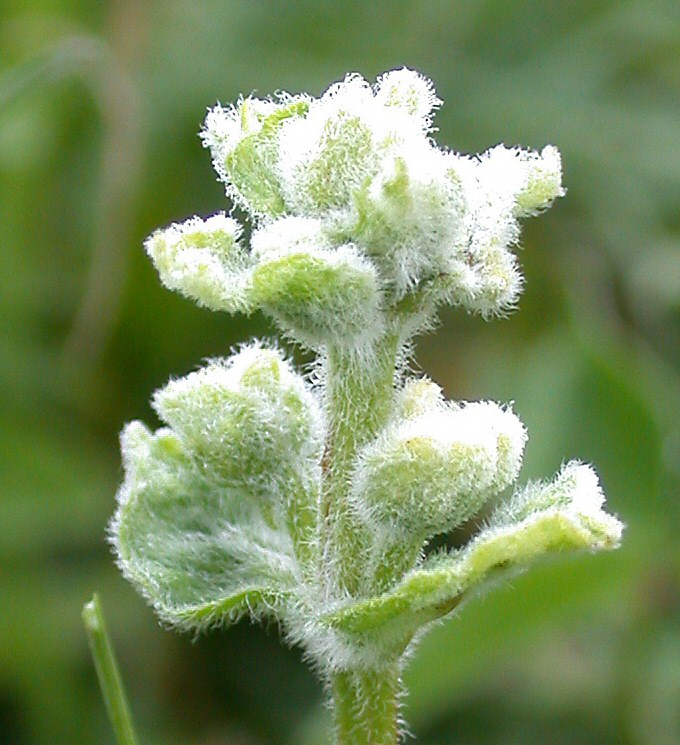
Galls made by Hemiptera
Trioza alacris psyllid on Bay
Cryptomyzus ribis red currant aphid on currant (Ribes)
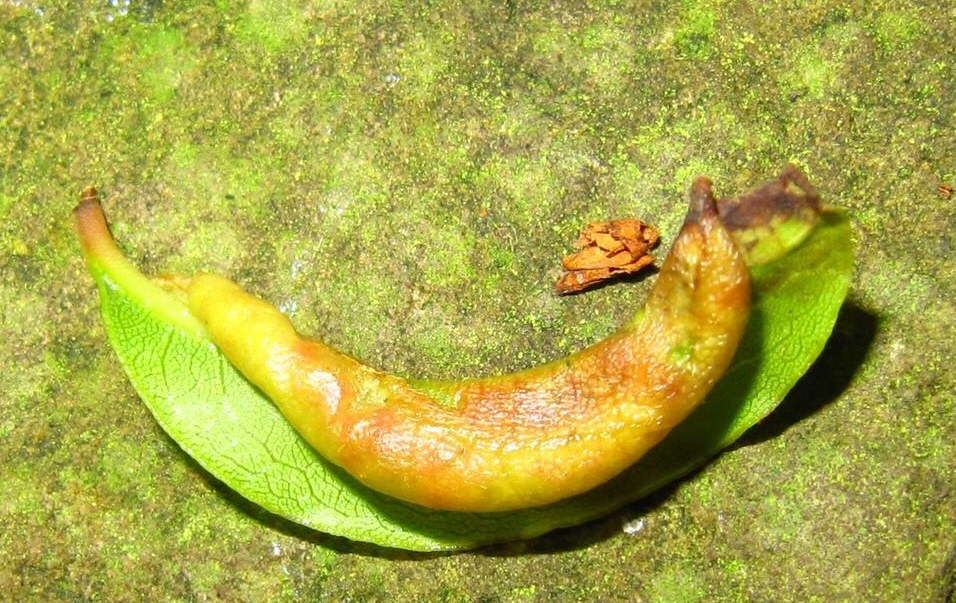
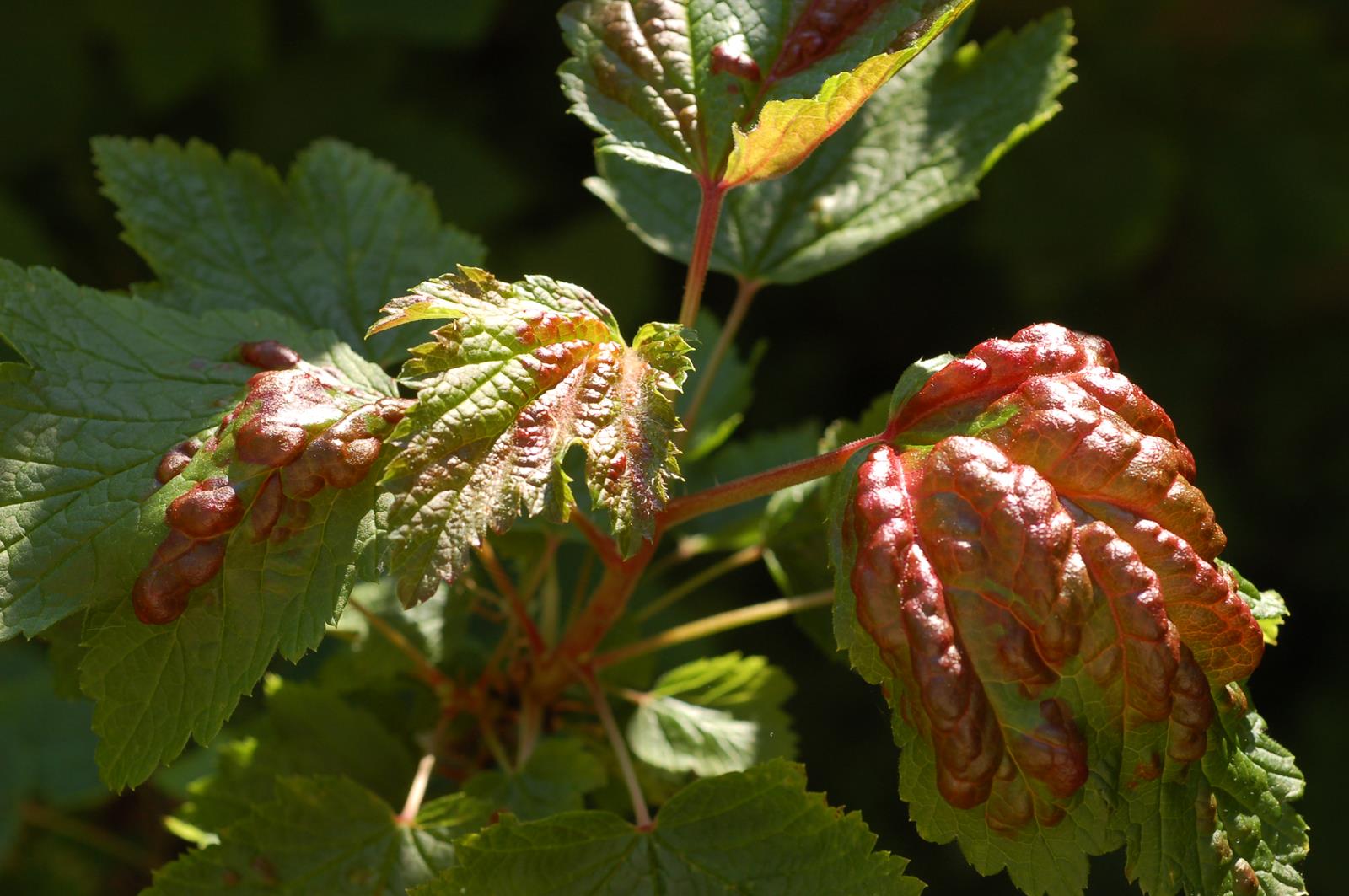
Galls made by midges (Diptera: flies)
Dasineura urticae gall midge on Stinging nettle
Rhopalomyia tanaceticola gall midge on Tansy
Dasineura gleditchiae gall midge on Honey Locust
For more on gall midges see our page here
Galls made by gall wasps
Aylax papaveris gall wasp on Poppy. Galled seed heads are bloated, normal (dead) head on the left.
For more gall wasps see our page here.
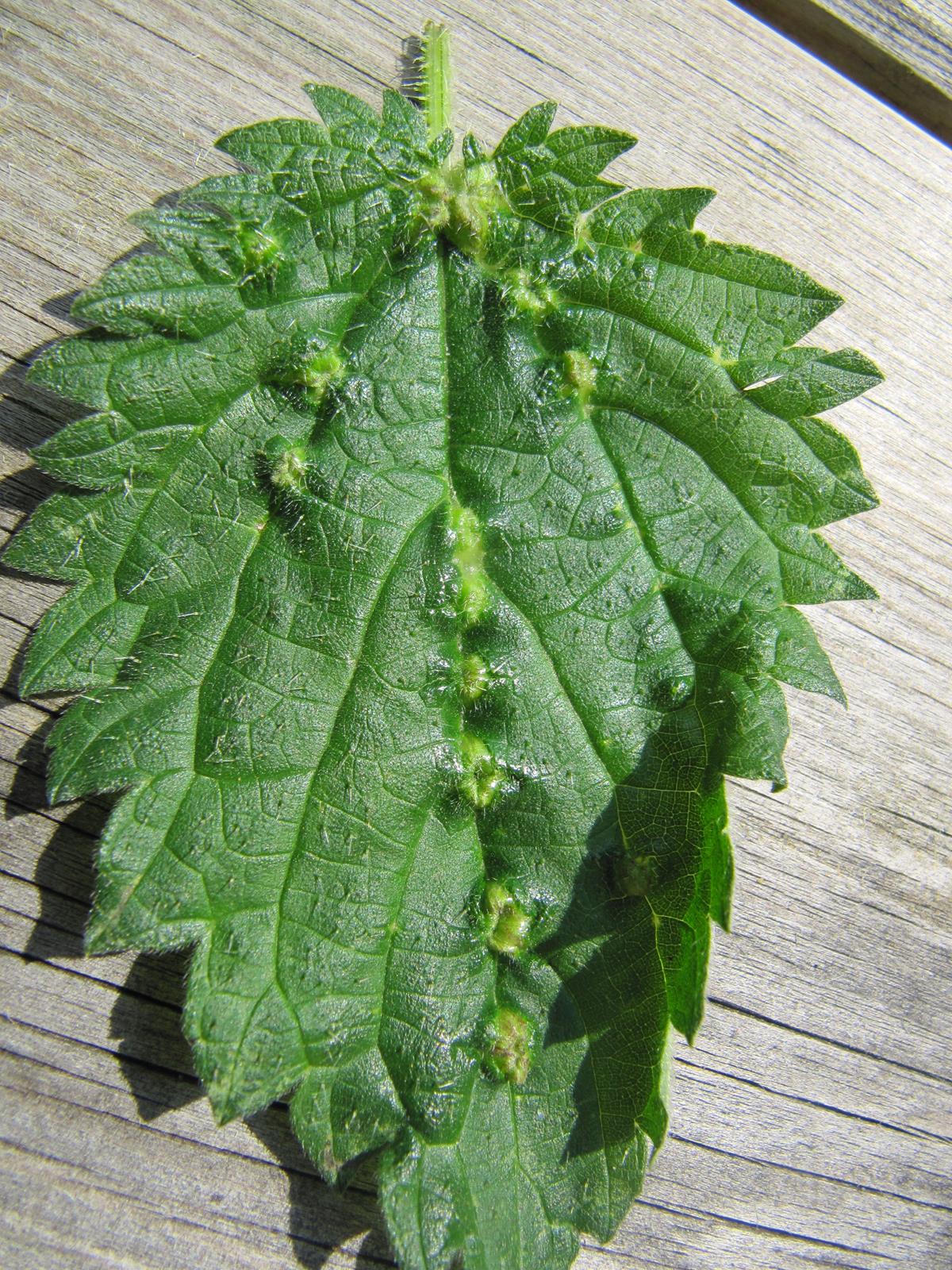
.jpg)
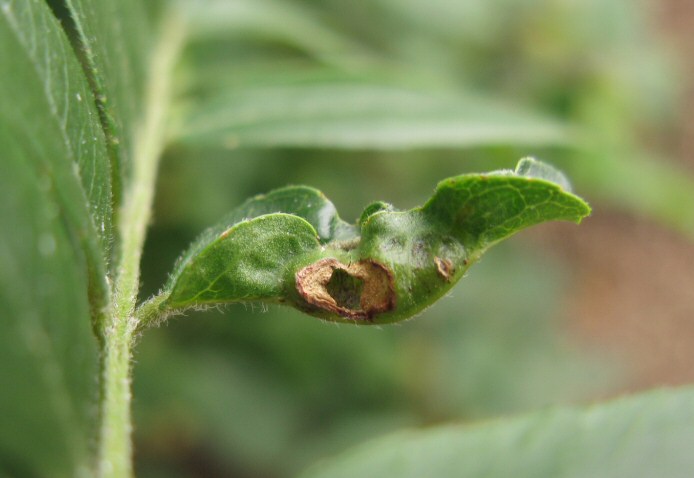
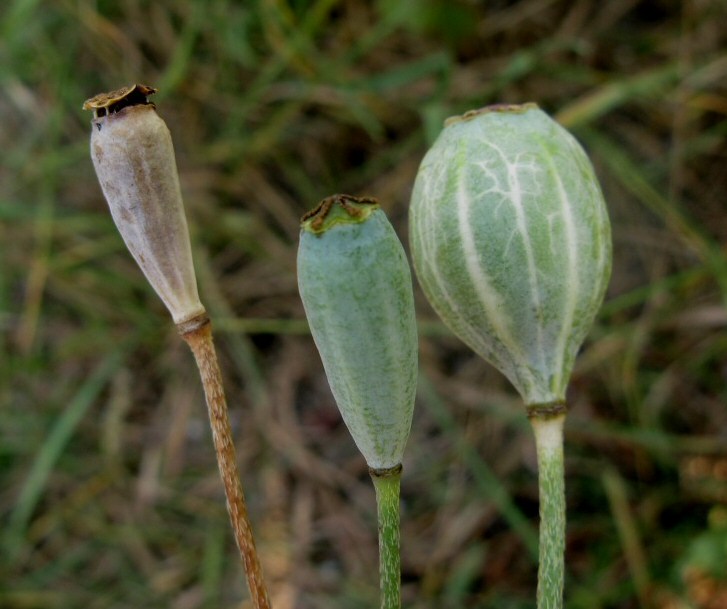

 Photo Michael Chinery.jpg)

Galls made by mites
Aculops fuchsiae mite on Fuchsia
Eriophyes pyri mite on Rowan
- late stage
Aceria labiatiflorae on wild Marjoram
For more on gall mites see our page here



Galls made by midges (Diptera: flies)
Dasineura urticae gall midge on Stinging nettle
Rhopalomyia tanaceticola gall midge
on Tansy
Dasineura gleditchiae gall midge on Honey Locust
For more on gall midges see our page here
Galls made by gall wasps
Aylax papaveris gall wasp on Poppy. Galled seed heads are bloated, normal (dead) head on the left.
Galls made by Hemiptera
Trioza alacris psyllid on Bay
Cryptomyzus ribis red currant aphid on currant (Ribes)
.jpg)


THE BRITISH PLANT GALL SOCIETY
BPGS encourages and coordinates the study of plant galls, with particular reference to the British Isles. We have a gall recording scheme, publish keys to, and books about, plant galls, organise field meetings and gall gathering weekends, workshops on gall ecology, and offer identification services. Members receive our twice yearly bulletin 'Cecidology' and we participate in ispot.
Our website is https://www.britishplantgallsociety.org
Finding out more
Redfern M. & Shirley P. (2023) British Plant Galls Third Edition, A Field Studies Council AIDGAP key
Chinery, M. (2011) Britain’s Plant Galls – a photographic guide. WildGuides Ltd












